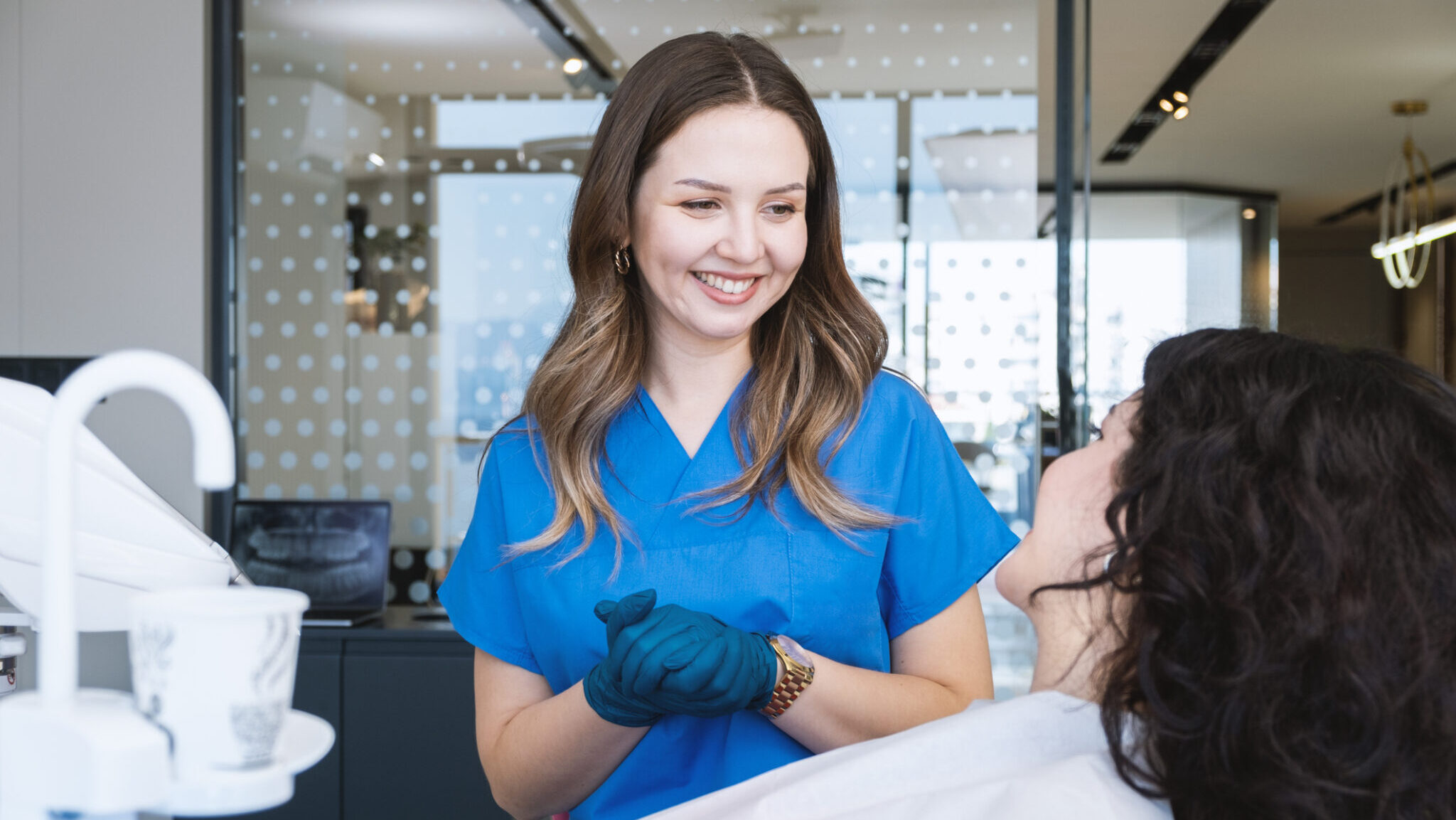
January 26, 2024
by Gabriele Maycher, CEO, GEM Dental Experts Inc. BSc, PID, dip DH, RDH:
Don’t let flawed processes hold your team back from experiencing better efficiency, healthier clients, happier employees, and continued practice growth.
Challenge:
As a new hygienist in my current practice, I’m noticing the comprehensive oral exams (COE) for new clients are falling short of provincial fee guide requirements when conducted by some of my colleagues, and lacking the depth expected by our professional college. Secondly, I’m sometimes faced with a client who hasn’t received the requisite assessments or periodontal status. In those cases, I grapple with whether to devote the hour to completing the COE without billing for it or to proceed with a treatment without adhering to the standard process of care: assess, diagnose, plan, implement, and evaluate (ADPIE).
Solution:
This situation not only raises concerns about ethical and practice standards but also poses a risk of dissatisfaction, poor client outcomes, and loss of trust, as these clients are accustomed to certain expectations during their appointments. Addressing this challenge requires a thoughtful and strategic approach to maintain both ethical standards, client satisfaction, and optimal outcomes.
Exploring the potential breakdowns in our comprehensive oral exam (COE) procedures unveils critical issues arising from either inappropriate scheduling clients with the wrong provider or time allocation. Let’s dissect these challenges:
1. COE Scheduled with the Dentist Prior to Hygiene Appointment:
Potential Lack of Coordination: Scheduling the COE with the dentist before the hygiene appointment introduces the risk of coordination and communication gaps with the hygiene department. While this approach might be effective if the dentist is prepared to conduct all COE required assessments (see side bar), my 15 years of consulting experience reveal that most dentists tend to leave anything beyond the hard tissue exam to the hygiene team. This creates the exact issue we are concerned about.
The alternative is to inform the client that, following the dental diagnosis of the COE by the dentist, their next appointment will involve additional assessments by the hygiene team, and treatment may not commence immediately. It’s crucial to address potential challenges, such as the hygienist potentially facing $0 billing during his or her session due to the COE having already been billed and the time needed due to the extent of periodontal disease. This protocol requires open discussion to eliminate pressure and align expectations. While this scheduling scenario may have billing concerns, if all parties share a common understanding, it can function effectively.
2. COE Scheduled After the Hygiene Appointment with the Dentist, Prioritizing Hygiene Treatment First:
Delayed Assessments: Scheduling the Comprehensive Oral Exam (COE) after the hygiene appointment introduces unwarranted delays that compromise the thoroughness of the examination and overall client care. This approach not only contradicts the established process of care, following ADPIE (Assess, Diagnose, Plan, Implement, and Evaluate), but also jeopardizes optimal client outcomes. Moreover, the dentist is likely not gathering all the required assessments to meet the COE standards, raising serious ethical concerns. If this scenario persists in your practice, urgent discussions are warranted to reconsider and likely eliminate this protocol, ensuring a commitment to delivering optimal client care aligned with established standards and ethical guidelines.
3. Inappropriate Amount of Time Scheduled for a COE:
Time Constraints: Allocating insufficient time for a COE poses the risk of rushed assessments and inadequate examination depth. This hampers the accuracy of diagnostic procedures, impacting the overall effectiveness of the comprehensive oral examination.
If any of these scenarios are unfolding in your practice, resulting in suboptimal assessments, open a dialogue between the practice manager, hygiene team, and the dentists. It’s crucial to acknowledge that these challenges are not unique to any one individual. One potential solution could involve reevaluating the approach by scheduling the entire Comprehensive Oral Exam (COE) appointment with the hygienist. This shift places the responsibility squarely on the hygienist for collecting all assessments, allowing for a more streamlined process.
Setting realistic expectations for the required time is paramount. Scheduling a minimum of 90 minutes for the appointment alleviates undue pressure on the team, offering adequate time to thoroughly complete assessments without the immediate demand to start treatment.
Recognizing that 95% of our clients present with varying degrees of periodontal disease, it’s essential to acknowledge that accomplishing both assessments and hygiene therapy in a single appointment may not be viable 95% of the time. This discussion is best initiated either during the initial scheduling phase or at the outset of the appointment when our hygienists communicate procedures and protocols with clients. This ensures a transparent understanding of expectations and the necessary time commitment for delivering comprehensive care.
Side bar:
Comprehensive Oral Exam Requirements:
- Medical and Dental History
- Radiographic Interpretation (both dental and dental hygiene)
- Vitals – Blood Pressure (BP), Heart Beats Per Minute (BPM), Temperature (TEMP)
- Extra-and-Intraoral Examination
- Hard Tissue Examination (including occlusal classification)
- Periodontal Examination – Probing Depths, % bleeding on probing (BOP), Attachment Loss (recession, Minimal or Inadequate attached gingiva (MAG/IAG), furcation involvement, mobility, frenum pulls)
- Dental and Dental Hygiene Diagnosis
- Treatment Plan – both recommended and accepted.
- OHI/Client Education
- Study models (digital)
- Intra-and-extraoral photos (optional but advised)
- Preserving and packaging biopsy specimens for shipment (if necessary)





Leave a Reply
You must be logged in to post a comment.